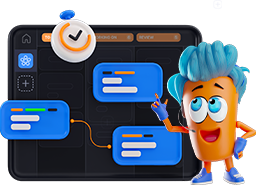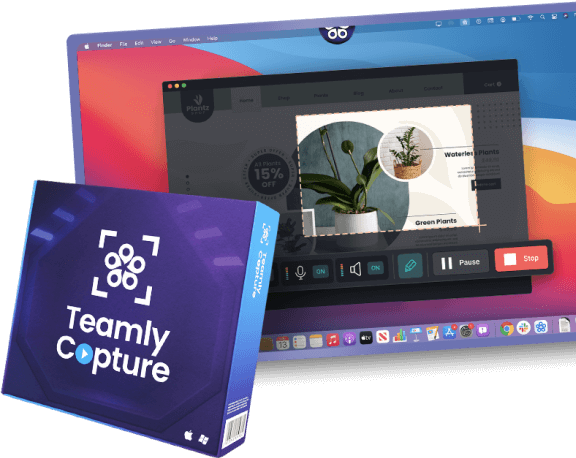
Click the button to start reading
From Good to Great: Real‑Life Examples of Managers Who Leveled‑Up Their Teams
Turning an ordinary crew into an all‑star lineup isn’t about fancy slogans or endless headcount.
It’s about adopting simple, repeatable habits that multiply talent and trust day after day.
The stories ahead prove that whether you oversee three interns or three thousand engineers, you can spark dramatic gains without waiting for budget windfalls or org charts to change.

Why Stories Beat Theories Every Time
Business books often bury you in frameworks, but a well‑told case study sticks like Velcro.
When you witness a real manager drop ego, ignite curiosity, and clear roadblocks, the brain builds a mental movie—complete with context, emotions, and outcomes.
That movie is easier to replay when you need inspiration at 9:00 a.m. stand‑up than any abstract quadrant model.
Below you’ll find five extended case studies, a transformation framework, an emotional‑intelligence primer, quick‑win checklists, and a 30‑day ramp‑up plan.
Together they add up to a practical field guide—double the depth of the original post. Bookmark it, share it with peers, and return whenever you feel your team’s momentum slipping.
Case Study #1: Satya Nadella’s Growth‑Mindset Revolution at Microsoft
When Satya Nadella stepped into the CEO chair in 2014, Microsoft was profitable but plateauing.
The Windows‑first mindset had siloed teams and slowed shipping speed. Nadella’s antidote? A culture of perpetual learning.
He introduced the mantra “learn it all, don’t know it all,” flipped annual reviews into continuous coaching, and modeled vulnerability by publicly sharing books he was reading and mistakes he’d made.
One symbolic move: he required every senior leader to shadow frontline support for a day each quarter.
That single ritual surfaced usability pain points faster than any dashboard. Within two years, collaboration scores surged, cloud revenue exploded, and engineers proudly sported Microsoft ❤️ Linux stickers—unthinkable in the Ballmer era.
Takeaways You Can Use Today
- Run a reverse ride‑along: Spend one hour weekly observing the world through a teammate’s eyes—support tickets, sales calls, or user interviews.
- Seed curiosity signals: Kick off meetings with “What did you learn this week?” Round the table; keep answers under 60 seconds.
- Swap decks for demos: Replace status slides with two‑minute product walk‑throughs to celebrate iteration in public.

Case Study #2: Cheryl Bachelder’s Servant Leadership at Popeyes
When Cheryl Bachelder became CEO of Popeyes Louisiana Kitchen in 2007, franchisees were on the brink of revolt.
Corporate mandates arrived late and eroded store profits. Bachelder flipped the script by literally flipping the org chart: headquarters now existed to serve operators. She kicked off a nationwide listening tour, converting complaints into a living backlog visible to every department.
Next, she offered unit leaders a “30‑day trust sprint.” Corporate would tackle the top three pain points their way, then share results in a public scoreboard. Wins snowballed.
Trust soared. Over her tenure, average restaurant volumes rose 40%, and system‑wide operating profit doubled.
Toolbox Actions
- Create a frustration forum: Use an open channel in Teamly where teammates post blockers. Leadership must answer within 48 hours.
- Quantify service: Add a KPI like “hours saved for the field” next to revenue goals.
- Turn dashboards into dialogues: Host monthly Ask‑Us‑Anything sessions where metrics drive the questions.

Case Study #3: Ed Catmull’s Braintrust at Pixar
Pixar’s Braintrust isn’t just a feedback session; it’s a psychological safety machine.
Directors present unfinished work to a hand‑picked crew who care about the film, not power politics. Catmull enforced two golden rules: feedback is candid, and the filmmaker decides what to change—no decision by committee. This balance keeps ego low and ownership high.
Braintrust insights saved Toy Story 2 (rewritten in nine months), fixed the emotional core of Inside Out, and rescued story arcs that might have cost millions if corrected after animation.
Equally important, the ritual nurtured a studio‑wide habit: problems are puzzles, not shame triggers.
Cues to Steal
- Rotate facilitators: Each meeting, a different team member moderates to equalize voices.
- Limit feedback to the room: No back‑channel Slacks. All critique lives where everyone hears it.
- Stage a midpoint demo day: Halfway through a sprint, gather diverse roles—design, QA, marketing—for cross‑pollination.
“If you aren’t prepared to be wrong, you’ll never come up with anything original.” — Ed Catmull

Case Study #4: Alan Mulally’s One‑Ford Turnaround
Mulally’s most radical act sounded mundane: a weekly two‑hour Business Plan Review (BPR).
Every executive arrived with a four‑color scorecard—green, yellow, or red status for each initiative plus blue for new problems. Early on, red marks were rare. Leaders feared exposure.
Mulally calmly asked, “Is there anything in the world that’s really OK?” They laughed. The next week, red flooded the board—and applause followed.
The BPR emphasized collective problem‑solving. When manufacturing VP Joe Hinrichs flagged a supply‑chain stall, five peers offered resources on the spot.
That openness cut firefighting costs and re‑energized engineers who’d felt powerless. By 2010, Ford posted $6.6 billion in profit, rebounding from an $18 billion loss four years prior.
Mini‑Playbook
- Color outside the lines: Green/yellow/red is intuitive; add blue for “new issue” to encourage early alerts.
- Anchor to one rhythm: Same time, same deck template, no exceptions. Predictability breeds prep.
- Celebrate the whistle‑blower: Give kudos to whoever surfaces a looming risk first.

Case Study #5: Sara’s Remote Revival (Mid‑Market SaaS Team)
Sara managed a scattered engineering squad in a 150‑person SaaS firm. Missed hand‑offs and silent Slack threads wrecked cycle time. She defined three low‑friction rituals:
- Daily Pulse: Each dev posted a 60‑second Loom before core hours covering yesterday’s win, today’s focus, and any blockers.
- Wednesday Wow: Mid‑week, the team demoed micro‑features (no slide decks) for internal stakeholders.
- Friday Feedback Five: Five quick prompts rated workload, clarity, and energy; trends popped in a Teamly chart.
Within six months, sprint velocity climbed 30%, critical bugs dropped by half, and engagement scores soared from 64 to 81. Even better, attrition sank to zero as teammates felt seen despite the distance.
Action Ammo
- Automate the pulse: Use scheduled Teamly check‑ins so you don’t nag manually.
- Cap demo prep: No more than 15 minutes allowed for polishing a feature demo—formality kills spontaneity.
- Watch the trend line, not single datapoints: If morale dips two weeks running, huddle fast; one‑off blips happen.
The Five Levers of Team Transformation
Across every case study, five levers appear again and again. Pull them in sequence for compounding impact:
- Psychological Safety — Make risk‑taking emotionally affordable. Applaud the red flag wavers.
- Shared Purpose — Map each task to a user benefit or mission metric so work feels vital.
- Rapid Feedback — Shorten the loop between action and insight. Minutes beat months.
- Visible Progress — Post metrics where eyes land daily; momentum is a motivator.
- Continuous Learning — Bake curiosity into rituals—book clubs, demo days, retrospective roasts.
Emotional Intelligence in Practice
Hard skills move projects; soft skills move hearts. The best managers flex four EI muscles:
- Self‑Awareness: Spot your energy dips and label them aloud—“Feeling tense; taking a five‑minute reset.” Transparency grants permission.
- Empathy: Reflect feelings before fixing problems. “It sounds like that blocker is draining your momentum.”
- Regulation: When conflict flares, slow the pace—deep breath, lowered voice, open posture.
- Social Skill: Bridge silos by praising cross‑team collaborations in public channels.
Micro Habits That Raise EI Fast
- End every one‑on‑one with: “What’s one thing I could do differently next week to make your work easier?”
- Use the traffic‑light check‑in: Green = thriving, Yellow = stressed, Red = stuck.
- Keep a three‑line journal: mood, trigger, response. Patterns pop within days.
Toolkit: Quick Wins You Can Implement in 48 Hours
| Action | Time Needed | Impact Goal |
|---|---|---|
| Schedule a demo day for anything shipping this sprint | 30 min | Boost shared understanding |
| Launch a public blockers channel in Teamly | 10 min | Surface risks quickly |
| Run a two‑question pulse survey (energy & clarity) | 15 min | Gauge morale |
| Post a weekly wins thread every Friday | 20 min | Reinforce progress |
| Invite a customer guest to your next all‑hands | 30 min | Refresh purpose |
Common Pitfalls (and How to Dodge Them)
- The Hero Trap: Jumping in to solve every issue yourself. Instead, guide teammates to own solutions.
- Data Deluge: Tracking 40 KPIs guarantees confusion. Stick to three north‑stars.
- Feedback Fade: Annual reviews only. Layer in weekly micro‑coaching to keep growth continuous.
Your 30‑Day Action Plan Template
Copy, paste, and tweak the timeline below. By month‑end, you’ll have visible momentum—and the trust to keep scaling.
- Week 1: Diagnose & Declare
- Run a traffic‑light survey to gauge morale and blockers.
- Pick one lever (e.g., psychological safety) to reinforce.
- Week 2: Ritualize Feedback
- Launch mid‑sprint demos and daily pulses.
- Model vulnerability by sharing your own blocker first.
- Week 3: Make Progress Public
- Publish a living dashboard (Teamly makes this a breeze).
- Celebrate the first micro‑win in a company‑wide shout‑out.
- Week 4: Cement Learning Loops
- Run a mini‑retro: what improved, what still drags?
- Set the next lever to pull (e.g., continuous learning).
Final Thoughts
None of the managers above waited for perfect conditions. They used the resources on hand, asked better questions, and doubled down on transparency.
Follow their lead: pick a lever, launch a ritual, and share results quickly. Greatness isn’t a secret sauce; it’s repeatable habits. Plant the first seed today, and watch your team grow from good to unforgettable.
















